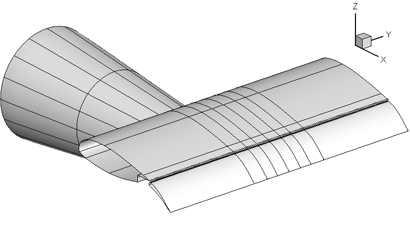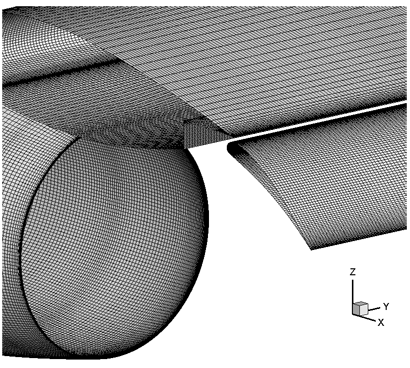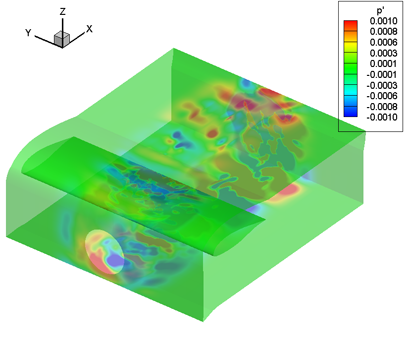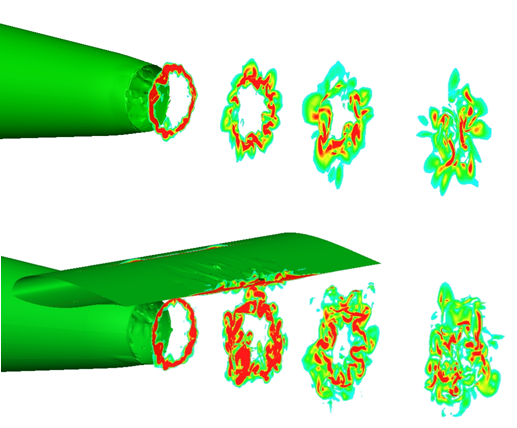The main aim of this work was to use time-accurate numerical tools to investigate aerodynamic noise due to the interaction of the vortical flow from jet engines with high-lift devices, and compare results with experimental results. Large-eddy simulations (LES) were performed for turbulent flow around aerofoils, with and without the influence from jet, combined with an integral solution of the Ffowcs Williams-Hawkings (FW-H) equation for sound wave propagation to investigate noise due to jet-airframe interaction. This study was mainly focus on the comparison of LES results with experimental data
Jet engines and airframes are the two main contributors to aircraft noise, with the latter including both high-lift devices and landing gears. To achieve reductions in aircraft noise, it is necessary to reduce the noise from all components that contribute significantly to the total noise and noise due to the interactions between components. Noise generation by the vortical flow from jet engine interacting with airframe structures, such as high-left devices when the wing is at landing configuration with flap deployed, is a fundamental problem affecting the design and performance of an aircraft and its system. Understanding of the installation effect would help todesign more eficient and more environmental friendly aircraft.
The main objectives for this study were to:
1. Investigate aerodynamic noise due to the interaction of the vortical flow from a jet engine with high-lift devices
2. Perform LES for the turbulent flow around wings, with and without the influence from the jet.
Understand flow physics and noise generation mechanisms for the phenomenon of jet wing interaction.
3. Investigate the radiated noise to far field due to jet-wing interaction using the FW-H method for sound wave propagation, to compare predicted far Veld noise with experimental data.

Sketch and block structure of the wing flap /jet case

Close-up of grid for the wing with flap deployed case
The main focus of this work was to use time-accurate numerical tools to investigate aerodynamic noise due to the interaction of the vortical flow from jet engine with high-lift devices. Large-eddy simulations have been performed for turbulent flow around aircraft wing, with and without the influence from the jet, combined with an integral solution of the Ffowcs Williams-Hawkings equation for sound wave propagation to investigate noise due to jet-flap interaction. Simulations were undertaken for five different geometries, namely wing alone, jet alone, jet/clean wing, wing with deployed flap and jet/wing with deployed flap
In the case with a clean wing the jet stream does not hit the wing, however when the flap is deployed the jet stream interacts with the wing and the jet stream hits the flap
For the Jet/clean wing interaction case, the jet stream is shifted towards the wing by a small angle (one degree) under the wing due to low pressure region under the wing. However it is deflected away from the wing when flap is deployed
Mean flow data and turbulence statistics and are presented. Self-similarity is achieved for the jet in the LES. The length of potential core was 4.8 D.
Acoustic predictions are made from LES results for three cases: jet, wing and jet/clean wing interaction cases. The far field aeroacoustics results are compared with available experimental measurements from QinetiQ.

Iso-surface of the second invariant of velocity gradient Q

Instantaneous non-dimensional pressure on a integration surface used for the FW-H calculation.

Contours of instantaneous vorticity for jet along case and wing/jet